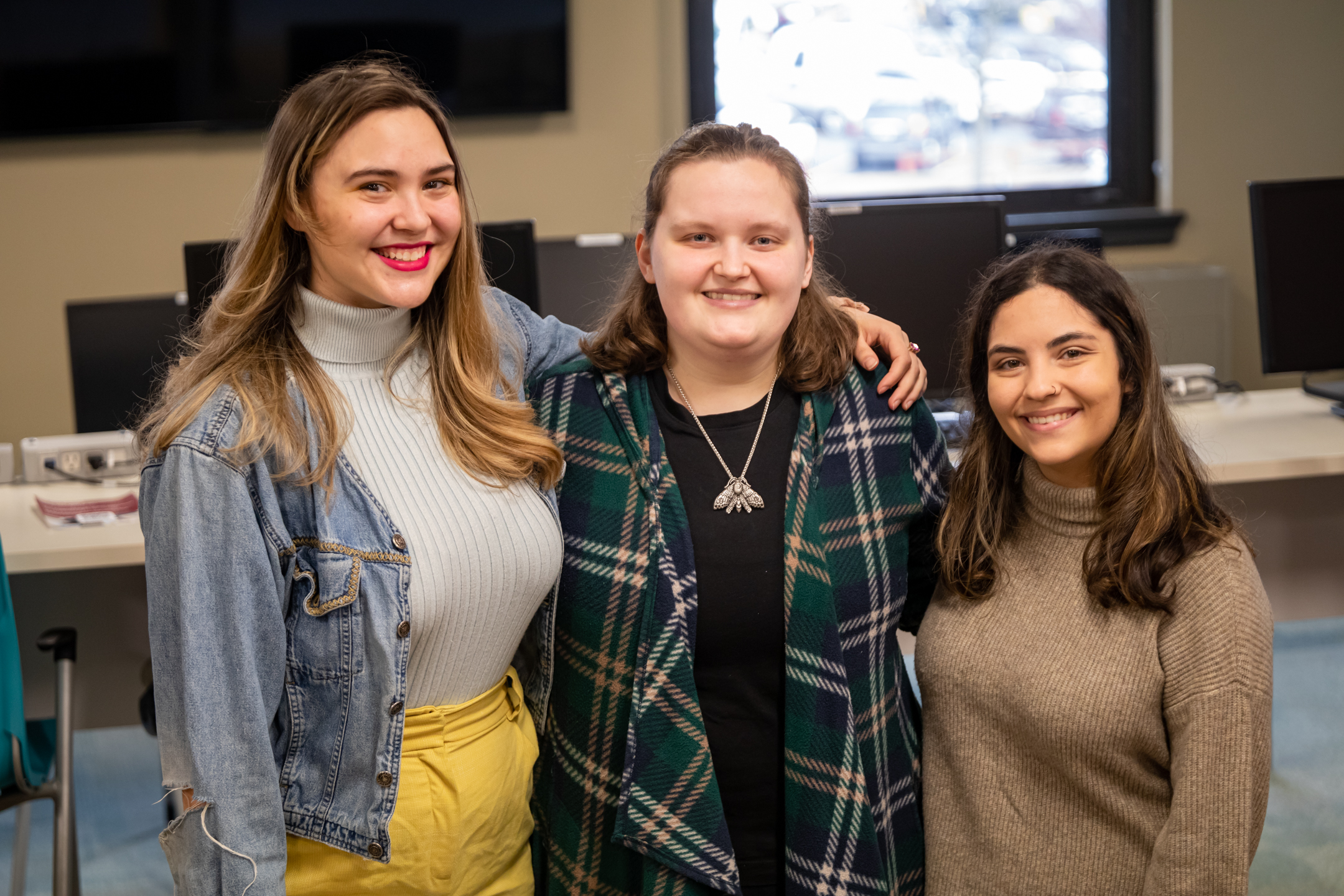
The students in their third year of professional school were academically well-prepared for Opioid and Addiction Teaching Day, held in three sessions last week, Feb. 6-8.
The medical and pharmacy students who came together did not expect, however, the way their counterparts from another discipline would approach the case studies, created by doctors and pharmacists from real-life experience.
“Our way of thinking is different from the pharmacy way of thinking,” said Priya Nair, a student at Albany Medical College. “It was cool to see how proficient they were in the areas we were weak in.”
From the pharmacy students’ perspective, it was eye-opening to see the medical students consider multiple treatment options beyond medication.
“I didn’t even think about surgery,” said Nicole Suker, a student at the Albany College of Pharmacy and Health Sciences (pictured above, left). “We’re really taught about the nitty-gritty chemical processes in the body. And we’re not taught a lot about musculoskeletal things.”
All students in the health professions must receive interprofessional education, training in which they collaborate and learn from each other, for their institutions to maintain accreditation, explained Dr. Amanda Engle, ACPHS’ director of Interprofessional Education, who also holds a position at AMC. Professional training that incorporates understanding of other healthcare disciplines is considered important in achieving patient safety goals established by the National Academy of Medicine.
For three pharmacy students and two medical students who shared the experience of Opioid and Addiction Teaching Day, coming together has been a highlight of their education, they said. The training made them aware of what their counterparts could contribute to treatment decision-making, and enhanced their respect for each other’s work.
Generally, the medical students saw the big picture and considered multiple options for treatment. When those options were medication, as they increasingly are, the pharmacy students stepped in with quick, detailed knowledge of contraindications and effective administration.
ACPHS student Athanasia (Nancy) Efstathiadis (pictured above, right) described one case study involving a patient with osteoarthritis. The medical students initially thought to prescribe a non-steroidal anti-inflammatory drug (NSAID) such as ibuprofen, but the pharmacy students insisted on checking the patient’s creatinine levels to determine his kidney function and decided that class of drug would be unsafe.
“We were able to take that off the table right away,” Efstathiadis said.
The medical students said they have seen some of that collaboration at play in the hospital, where they spend most of their third year following two years of academic work.
“One thing I’ve learned is I’m not afraid. If I have a question, just go to the pharmacist,” said medical student Jad Moumen.
ACPHS student Carson Hardy (pictured above, center) said the collaborative training was a reminder of the critical role of pharmacists in acute care.
“The stereotype of pharmacists – that we’re just in the basement (pharmacy) – is changing,” Hardy said. “More pharmacists are getting to be on clinical rounds and everything else.”
In keeping with the collaborative nature of the training program, Engle’s co-directors are Dr. C. Lynn Cabral, assistant dean of medical education at AMC and Dr. Jacqueline Cleary, associate professor at ACPHS. Their paper written together on Opioid and Addiction Training Day was published online in the Journal of Interprofessional Education & Practice in November.

